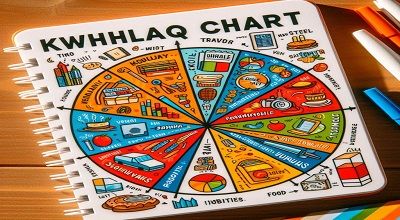KWHLAQ Chart
The KWHLAQ chart is an instructional tool designed to guide and facilitate the learning process. It is an acronym representing six key stages that learners go through when engaging with a topic or subject. Each letter in the KWHLAQ corresponds to a phase of the learning journey. Helping students to explore, understand, and apply knowledge effectively.
- Know (K): The first stage of a KWHLAQ chart is “Know.” In this phase, students are encouraged to brainstorm and identify what they already know about a particular topic. This could include prior knowledge gained from previous lessons, personal experiences, or background information. Teachers often use this stage to assess the student’s starting point and to activate their existing knowledge. Creating a foundation for the upcoming learning experience.
- Want to know (W): Following the initial exploration of existing knowledge. The “want to know” stage focuses on students’ curiosity and the questions they have about the topic. This phase encourages learners to identify gaps in their understanding and express their interest in specific aspects of the subject. It helps set the direction for the learning process. Ensuring that students are engaged and motivated to seek answers to their questions.
- How to find out (H): Once students have identified what they want to know. The next step is to determine how to acquire the information. The “how to find out” stage involves brainstorming and planning the research or investigation process. Students explore potential resources, methods, and strategies for gathering information. This phase encourages critical thinking and problem-solving skills as students navigate the available avenues for learning.
More here…
- Learned (L): The “learned” stage is where students record and summarize the information they have gathered through research or exploration. This phase involves synthesizing knowledge, drawing conclusions, and organizing key findings. Creating a summary of learned information helps students consolidate their understanding. Provides a reference point for future discussions or assessments.
- Action (A): The “Action” stage encourages students to apply what they have learned. This could involve various activities, such as projects, presentations, or real-world applications of the acquired knowledge. By engaging in hands-on activities or sharing their understanding with others. Students deepen their comprehension and develop practical skills related to the topic.
- Questions (Q): The final stage, “Questions,” prompts students to reflect on their learning experience. Generate new questions that may have emerged during the process. This stage reinforces the idea that learning is an ongoing, dynamic process. It encourages a growth mindset by fostering curiosity and a continuous quest for knowledge.
Final Summary
In summary, the KWHLAQ chart serves as a comprehensive framework for guiding the learning journey. It empowers students to take an active role in their education, promoting inquiry, critical thinking, and the application of knowledge. Teachers find it valuable to design lessons that align with students’ interests and needs. Fostering a more engaging and effective learning environment.
